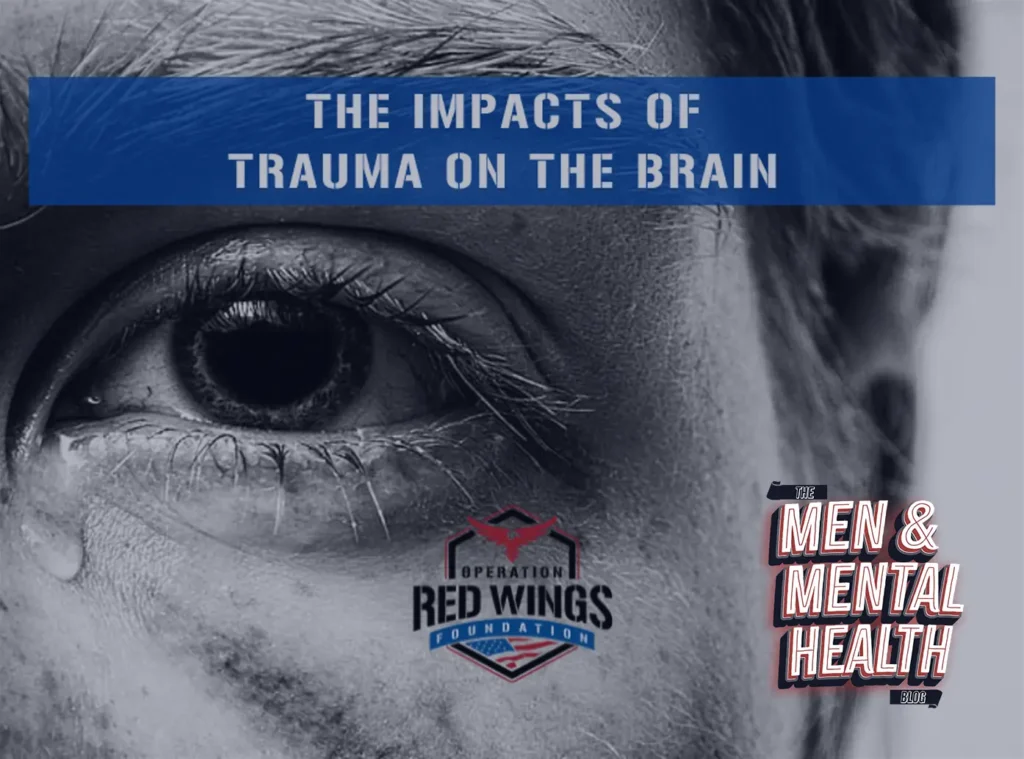The Men and Mental Health Blog features some curated content from online resources. This post originally appeared on the Operation Red Wings Foundation website and was not written by Good Dads staff.
Did you know that the most common symptoms of psychological trauma include denial, disbelief, anger, anxiety, and withdrawal from others?
Trauma is a pervasive and often overlooked problem that can significantly impact your health.
Even though researchers understand the short-term effects of trauma, the long-term effects on the brain can be more subtle and difficult to understand.
To help make things easier for you, we have written a guide that explains how trauma changes the brain. Keep reading if you want to find out more.
Short-Term Trauma Effects on the Brain
When somebody experiences trauma, they have a natural stress response which is known as the “fight or flight” response. When you have this type of response, your body will release a surge of hormones.
These hormones will affect your brain right away. Brain activity and blood flow will increase. In the short term, these changes might help you to cope with a traumatic event.
Effects of Trauma and the Brain During Fight or Flight
During the “fight or flight” response to trauma, your body will release hormones such as adrenaline and cortisol. These hormones will change how your body functions.
The “fight or flight” response can be helpful in the short term. But if it is activated frequently or for extended periods of time, it can have negative effects on the body and brain.
Chronic activation of the stress response can lead to physical and mental health problems.
Increased Heart Rate and Blood Pressure
These changes help to pump more blood and oxygen to the muscles. This will prepare your body for physical activity.
Heightened Senses
Your brain will become more alert and focused. This is why you will feel more sensitive to sights, sounds, and other stimuli.
Suppression of Non-essential Functions
Your body might temporarily shut down functions that are not necessary for immediate survival. This will include digestion and immune system function.
Release of Energy Stores
The body will release stored glucose and fats. These will provide energy to the muscles.

Relationship Between Trauma, Threat Detection and False Alarms
Traumatic events will activate peoples’ natural stress responses.
This response can help you cope with perceived threats. But if you’ve suffered from many traumatic experiences, it is possible that you will overreact to these perceived threats.
For example, somebody who has experienced trauma may have an exaggerated startle response to loud noises or may feel anxious in situations that are not actually dangerous.
It might be challenging for them to calm down. This is one of the reasons why so many people suffer from anxiety disorders such as post-traumatic stress disorder (PTSD).
You might lose the ability to accurately assess and respond to threats if you have this disorder.
Understanding the Trauma Brain vs Normal Brain
The amygdala, hippocampus, and prefrontal cortex are three areas of the brain that are particularly affected by trauma.
The amygdala is the part of the brain that processes and regulates emotions, particularly fear and anxiety. When you experience a traumatic event, the amygdala will become hyperactive.
Also, trauma might influence the connections between the amygdala and other important brain regions. This can further disrupt emotional regulation.
The hippocampus is a region of the brain that is involved in memory and emotion regulation. Trauma can change its structure and function.
This is one of the reasons why it is so common for victims of trauma to have memory impairments. Others might struggle with depression.
In addition, trauma can create an imbalance in the levels of certain neurotransmitters, such as serotonin and norepinephrine. These neurotransmitters help to regulate moods and emotions.
The prefrontal cortex is a region of the brain that is involved in higher-level thinking and decision-making. Trauma can change the structure and function of this brain region.
If you suffer from trauma, it is important to seek the right kinds of support and treatment. This will help you to build resilience and to heal.
How To Heal Trauma
Healing is the process of repairing or restoring something that is damaged or injured. When it comes to healing from trauma, this will involve addressing the physical, emotional, and psychological effects of a traumatic experience.
Healing can occur in many different ways. The best approach will depend on your specific needs and situation. If you are not sure how to start healing, one of the best things you can do is to learn to ground yourself.
Some common approaches to healing from trauma include therapy, medication, self-care practices (such as exercise, mindfulness, and healthy eating), and support from loved ones.
Healing may also involve addressing any underlying physical or mental health issues that may have been exacerbated by the trauma.
Keep in mind that healing is a journey. It is not always a straightforward or linear process.
You are bound to experience lots of ups and downs. This is why it is important to be patient and to be kind to yourself while you navigate this process.
It is also important to seek support from qualified professionals and trusted loved ones to help facilitate the healing process.




